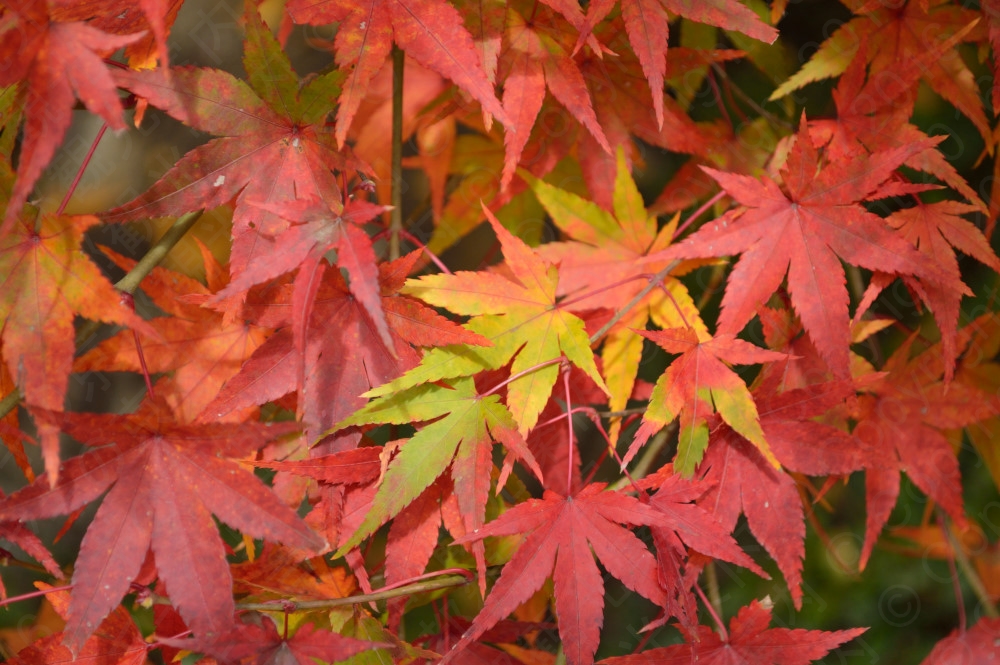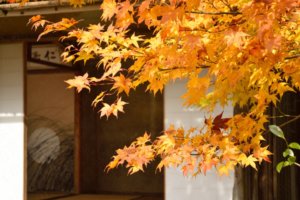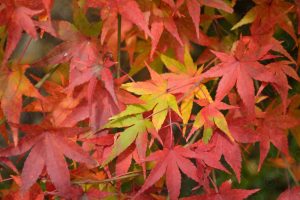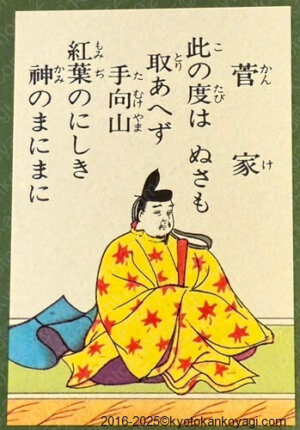Autumn leaves meant “Yellow leaves”
As indicated in the Imperial period Reiwa, we’ve loved flowers in spring and autumn leaves in fall for a long time.
Autumn leaves or autumn colors in English is called “紅葉 (pronounced as Momiji or Koyo) in Japanese. The word means “leaves turned red” these days.
However, Momiji in ancient times was described as “黄葉 (leaves turned red)” and was pronounced as “Momichi.”
“Momishi” is a noun form of a verb “Momitsu (To turn yellow).” As plum blossom used to be considered as typical spring flower instead of Sakura, our sensitivity on seasons was different from the one we have today.
In Manyoshu, the oldest compilation of Waka poem in the 8th century, there are 92 poems about autumn leaves. And 88 out of 92 describe them as yellow leaves, i.e., yellow was a color of fall.
In those days, an poem called “秋風辞” written by Emperor Wu of Han dynasty had an effect on this idea.
The poem is found in the Wen Xuan, one of the oldest anthologies of Chinese literature, that was popular among the learned in our country. Actually, it is often said “Manyoshu was not compiled without Wen Xuan.”
The poem (excerpt) reads:
- Original text: 秋風起兮白雲飛 草木黄落兮雁南帰
- In Japanese: 秋風起こって白雲飛ぶ 草木黄落して雁南に帰る
- Translation; In the autumn wind, the white clouds float around. Plants turn yellow to fall off, geese head south.
In ancient China, fall was sad season and implied something on decline. Our ancestors inherited this idea but they found something aesthetic in leaves of plants. They read many poems about them in Manyoshu though there no poem referring to autumn leaves in Wen Xuan.
The fierce Goryo turns the leaves red
In the 9th century, owing to Sugawara no Michizane paved the way for the word known as “紅葉”/ “Red leaves” today. He is one of the most famous historical figures and Goryos and known as “The deity of learning” and a prominent poet of Waka and Kanshi (Chinese poem).
He wrote:
It is tough to translate this in English as to translate “Ode to a Nightingale” in Japanese and I tell you the situation.
He was on a journey and faced a mountain ornamented with autumn leaves (紅葉/ Red leaves). He decided to offer them to deity as “幣(Nusa).” Nusa is an offering to deity.
A poem of Du Mu, a Chinese poet of 9th century, had an impact on this poem. It reads:
- Original text: 遠上寒山石径斜 白雲生処有人家 停車坐愛楓林晩 霜葉紅于二月花
- In Japanese: 遠く寒山に上れば石径斜なり 白雲生ずる処人家あり 停車を停めて坐に愛す楓林の晩 霜葉は二月の花よりも紅なり
- Translation: In the deserted mountain, there is a cobbled path. I see houses far away under the clouds. I stopped a car (something like a rickshaw?) and find autumn leaves in the twilight is redder than the spring flowers.
He was a master of Kanshi and narrated the aesthetics in Japanese fall with the expression(s) of ancient China.
Autumn leaves these days
Strictly speaking, “紅葉” means the leaves turned red but it doesn’t mean a specific color usually. It stands for the leaves turned their colors in general. We admire the leaves of many kind of plants in red, yellow, green, and so on. And I guess many people prefer the red ones. The following is recommended places to visit. Enjoy them. 合掌
The best place to visit is Eikando Temple.
In Tenjuan temple, you can enjoy red and yellow leaves in Karesansui garden.
I prefer Korin-in temple. The most underrated place.






